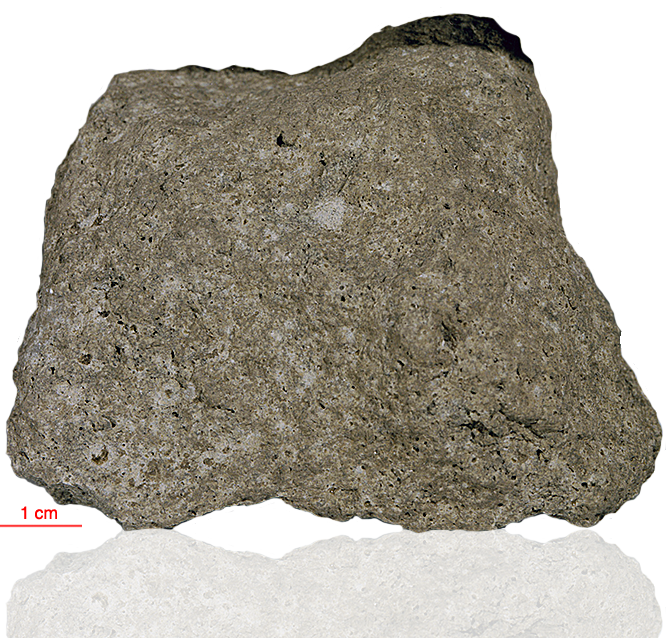
Fact sheet
62235 is a clast-bearing impact-melt breccia characterized predominantly by coalescing oikocrysts of orthopyroxene enclosing laths of plagioclase. Poikilitic ilmenite (with included plagioclase tablets) and small amounts of phosphate, metallic iron, troilite and K-feldspar are concentrated between the oikocrysts. Mineral clasts, dominantly plagioclase, together with less commonly occurring lithic clasts are scattered randomly throughout the sample. Irregularly shaped vugs (up to 0.6 mm) are relatively common; spherical vesicles (typically 0.25 mm and less) are also present but are less dominant. Orthopyroxene oikocrysts typically display rectangular outlines (up to 2 mm in length) although round and irregular shapes are also present. Oikocrysts are commonly observed to have grown around spherical vesicles. Rotation 2 shows a small anorthosite clast.
The sample weighed 319.6 grams before analysis and has been dated at 3.876±32 billion years (Ar/Ar).
Further details of this and other Apollo samples are here: http://curator.jsc.nasa.gov/lunar/
The Apollo 16 landing site was in the hilly region around Descartes crater in the lunar highlands. The landing spot was chosen to allow the astronauts to gather geologically older lunar material (Descartes Formation and the Cayley Formation) than the samples obtained in the first four landings, which were in or near lunar maria.
The mission lasted 11.1 days, with a stay on the lunar surface of 71 hours. The crew were on the lunar surface for 20.2 hours during which they traversed approximately 27 kilometers and collected approximately 96 kilograms of samples.
Apollo 16 was launched on 16 April 1972.






